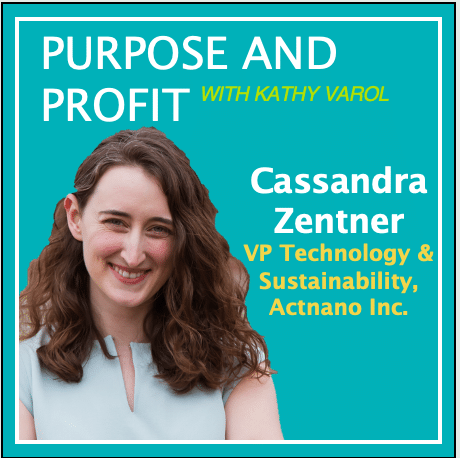Show Notes:
Dr. Cassandra Zentner is the Vice President of Technology and Sustainability at actnano, the global leader in PFAS-free nanocoatings used to protect circuit boards across industries. actano was created after the CEO, while working at a different company, saw factory workers getting sick from handling traditional coatings. actnano’s technology is currently protecting many of the world’s foremost consumer electronic brands, safeguarding millions of vehicles, and defending numerous industrial applications against harsh electrical and environmental conditions.
Cassandra brings her scientific background—a PhD in Chemistry from MIT—to drive actnano’s mission to bring safer chemical alternatives to the electronics industry.
In this episode we discuss:
✅ PFAS—what they are and why they present a huge problem
✅ The meaning of “safer chemicals”
✅ The importance of prevention versus mitigation
3 episode takeaways (listen to the full episode for a lot more gems!):
1️⃣ Innovating Out of a Broken System. When actnano founder Taymur Ahmad noticed the harmful impact of PFAS in protective coatings, he didn’t just stand by. He saw a broken system as a call to action. A puzzle to be solved.
By developing PFAS-free nano-coating he stepped up as a true innovator, showing us that discovering a broken system is the first step towards creating a solution. It’s a reminder that the world benefits immensely from changemakers like Taymur, who not only dream up safer alternatives but also pave the way for others to adopt these solutions in their operations.
***
2️⃣ The Invisible Threats Among Us. We’re naturally drawn to the big, obvious problems. The proverbial elephant in a room. Yet, it’s often what we can’t see that poses the greater danger.
PFAS, a prevalent yet invisible threat found in countless everyday items—from electronics to personal care products—carries serious health risks, including certain cancers, fertility issues, and developmental delays in children. This hidden danger reminds us that sometimes the most significant threats to our well-being lurk out of sight, challenging us to look beyond the obvious.
* * *
3️⃣ Out Of Sight, Out Of Mind. Then there are the enormous issues we choose to ignore, like the Great Pacific Garbage Patch, an immense span of waterborne waste twice the size of Texas, floating in the middle of the Pacific without much attention. This “plastic continent” is a stark example of “out of sight, out of mind,” yet its impact on our health and environment is profound.
Microplastics, including those containing PFAS, break away from this mass, infiltrating the seafood we eat and carrying with them a host of health risks. It’s a clear signal that just because we can’t see a problem, or a problem feels far from home, doesn’t mean it’s any less real or harmful. This unseen danger serves as a critical wake-up call to the interconnectedness of our global ecosystem and the hidden impacts on our health.
References:
- EPA page on PFAS
- ChemSec
- North Carolina DEQ page on the Cape Fear River
- Change Chemistry
- EU page on REACH Regulation
- EU page on RoHS
- Purpose and Profit episode with Ken Cook of the Environmental Working Group

